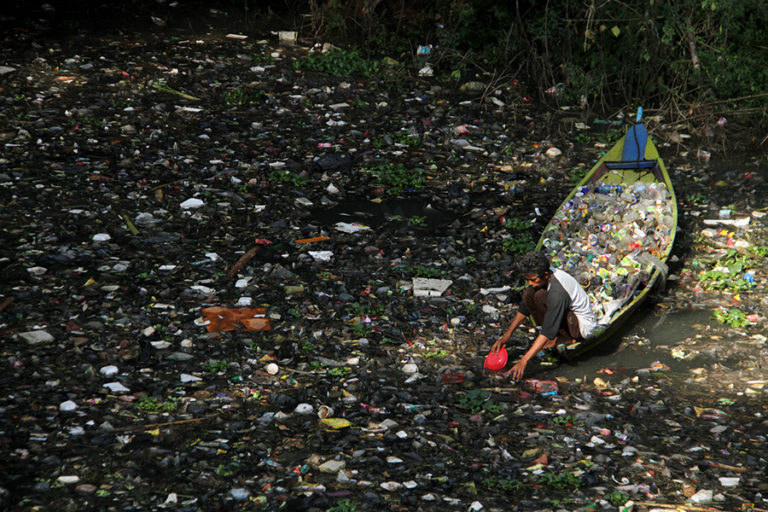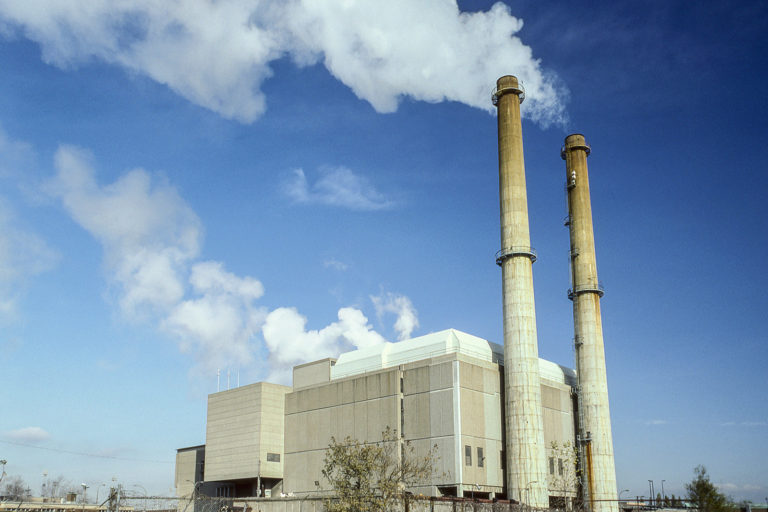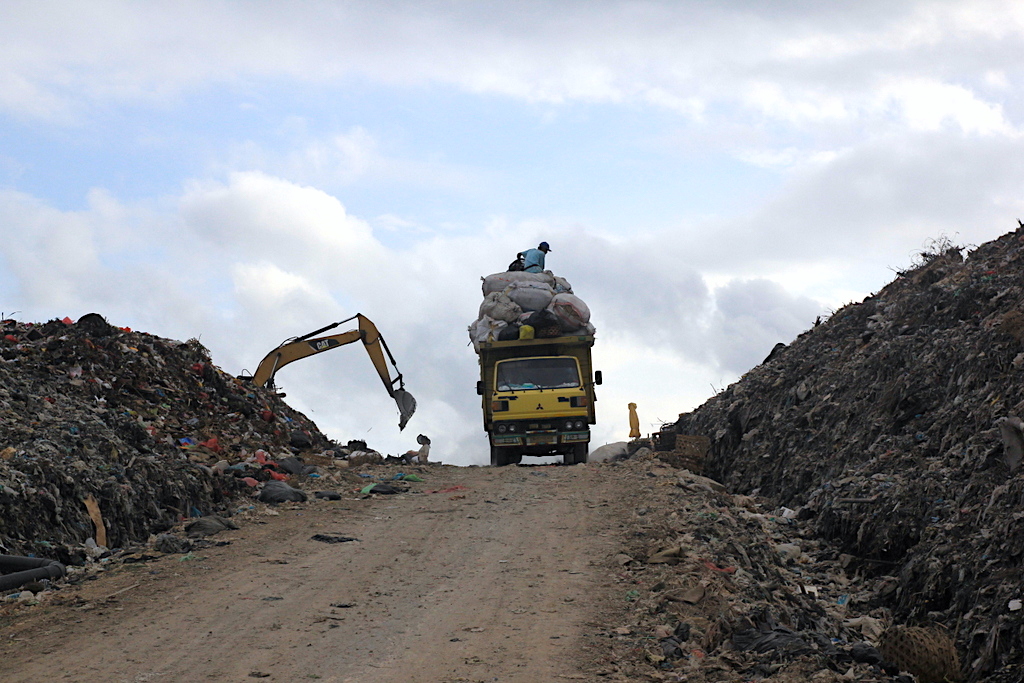JAKARTA — The Indonesian government plans to burn waste to fuel power plants in four cities on the island of Java this year as part of efforts to tackle the country’s plastic waste crisis.
Indonesia is the second-biggest contributor, after China, to the plastic waste that end up in the oceans, and is among a growing number of Asian countries refusing to import waste from developed countries.
President Joko Widodo called for a solution to the waste problem during a July 16 cabinet meeting, and criticized the lack of updates on plans to build waste incinerators.
“To this day, I haven’t heard any progress on which ones are already online and which ones are already built,” he said in a statement issued by the government.
“This isn’t about the electricity. We want to resolve the trash issue; the electricity comes afterward,” he added.
Cabinet Secretary Pramono Anung said that 12 cities had proposed building waste-fueled power plants, but only Jakarta, Surabaya, Bekasi and Solo were ready to do so before the end of this year.

The energy ministry expects to have 12 such waste-to-energy plants online by 2022, generating a combined 234 megawatts of electricity by burning 16,000 tons of waste a day.
But a long-standing problem is that the Java-Bali grid that they’ll feed into is already heavily oversupplied, to the extent that the glut in idle energy threatens to damage the country’s finances.
Environmentalists also say that burning trash to generate electricity isn’t a sustainable solution to the plastic waste crisis. If anything, they say, it will result in the emission of toxic chemicals such as dioxins, mercury and micro particles.
“The push for acceleration of setting up waste-based power plants with incineration once again shows that the administration prioritizes investors, big capital and centralistic projects,” Nur Hidayati, the executive director of the Indonesian Forum for the Environment (Walhi), said in a statement published July 18.
A 2001 report by Greenpeace found that people living in the vicinity of incinerators in England, Spain and Japan were exposed to an increase in dioxins in their body. This range of compounds has been linked to cancer and immune system damage, while mercury is known to disrupt the nervous system and affect brain development in children.
“The use of incinerators is not in line with the purpose of waste management to protect health and the environment,” Fajri Fadhillah, a researcher for pollution management at the Indonesian Center for Environmental Law (ICEL), told Mongabay.
In April 2018, Widodo had issued a regulation pushing local governments to set up “eco-friendly” plants to turn waste into electricity. The regulation came out after a ruling by the Supreme Court ordering the government to revoke a 2016 presidential regulation that also pushed for the development of waste-to-energy facilities in seven cities.
“The government must uphold the decision from Indonesia’s Supreme Court, which orders that managing waste by using thermal technology does not go in line with the country’s law on waste management,” Fajri said.
Activists have also criticized the push for incinerator plants as a shortcut to reducing the amount of waste from Indonesia that ends up in the sea, much of it plastic, by 70 percent by 2025. The government is set to spend $1 billion over the next years to address the problem.
“The biggest myth about incinerators is that they make the trash gone,” said Ahmad Ashov Birry, the program director at Trend Asia, a clean-energy initiative in Indonesia, who previously served as a detox campaigner at Greenpeace Indonesia.
“The reality is that the trash changes form into gas which is dispersed by air to the ocean and land,” he added.

Environmentalists have also raised concerns about the likelihood of improper environmental impact assessments in the construction of the waste-to-energy plants.
The developer of what would be Indonesia’s first such incinerator, in Jakarta, has promised to comply with European Union-level emission control standards that are more stringent than prevailing local standards. Indonesia only requires dioxin tests to be carried out every five years, as the country lacks the specialized lab facilities to carry out such checks. But a 2010 study shows that even incinerators using the newest technology still release high levels of dioxins.
“Considering that there will be a new source of toxic pollution in the cities with the waste-based power plants, feasibility studies and environmental permits won’t be adequate to protect the quality of life, health, and improve the environment in Indonesia,” said Daru Setyorini, the director of the NGO Ecological Observation and Wetlands Conservation (Ecoton).
Air pollution is already a major issue in the capital, Jakarta, where a group of citizens is suing the government, including the president, over air quality that consistently ranks as among the worst in the world.
“The poor environmental quality in Jakarta and weak monitoring enforcement are good enough reasons to say that the plan to build incinerators is a reckless action,” Fajri said.
The new plants will also do little to help Indonesia cut its carbon dioxide emissions as part of its commitments under the 2015 Paris Agreement. Globally, plastics accounted for 1.8 billion metric tons equivalent of CO2 emissions in 2015, according to a 2019 study by researchers at the University of California, Santa Barbara. These emissions are present throughout the whole life cycle of plastics: from production and transportation, to disposal and incineration. The Philippines is the first and only country to date to ban incineration of plastic waste, since the passage of the Clean Air Act in 1999.
Indonesia has sent out mixed signals over its commitment to cut emissions from the energy sector. While it plans to increase the absolute figure for renewable power generation over the long term, it will shrink renewables’ share of the overall energy mix in favor of more coal-fired electricity. Widodo recently also signaled a major shift in energy policy, reportedly saying he wants to “start reducing the use of coal.”
Instead of incineration, green activists say, the government should boost efforts to reduce the amount of waste produced in the first place.
“Zero waste approach has been proven to be implementable in many big cities,” Ecoton’s Daru said, “and that should be getting top support from the federal government.”

Source: https://news.mongabay.com/2019/07/indonesia-facing-a-waste-crisis-plans-to-burn-it-for-electricity/
Contact Us to Have Your Registration Paper
Tel: +86 21 6104 7706
Cell: +86-139-1600-0984 (WhatsApp / WeChat)
Email: info@inbcglobal.com
Our account manager will serve your side to help you secure the seat.
Or you can do the online
Pre-registration here!